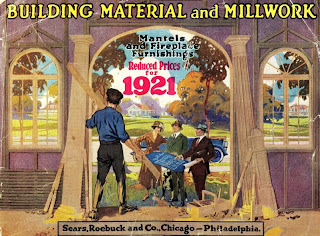The New Salesman and the Shiny New Catalog
In the age of Star Wars for Distributor Sales, it’s still
the Sticker Wars
 |
| Don't let this be the last impression you left on your customer |
In sales, it’s not about the seller. You can be tech savvy and proud of it, but
customer comfort is king. For new
salespeople, this is perplexing. You
maneuver through the e-catalogs of at Amazon.com. You carry your life on a tablet – calendar,
catalogs, contacts, kid’s pictures the whole shooting match. Regardless of your electronic life, you have
to understand many of our customers are still using comfortable old methods while
making buying decisions.
These customers have access to the internet. They may have dozens of electronic brochures
loaded on their computers. However, when
purchases are made they return to tried and true ways of getting things
done. And this brings us to the paper
catalog.
Every engineering department, maintenance group or
contractor on the planet still maintains a library of product catalogs. Even though a good many turn to the internet
for some level of product selection, they ultimately end up with a hard catalog
for the final stages of their decision making.
We’ll explore.
I once made the mistake of replacing the beat up and grease
covered catalog of a well-respected plant maintenance engineer. I mean this thing was a health hazard. It was several years out of date, the pages
were dirty. Many showed the marks of
coffee spills and cutting fluid drippings garnered from repeated trips through
the plant. I replaced it with a shiny
new version. Later, after receiving a world class butt chewing, I learned
the old catalog had notes and references to the machines where the parts where
used. In addition, the engineer had
taken the time to mark which parts were kept in stock by my own company. One other thing, the old catalog had a sticker
with our phone number, after hour’s line and the name of his favorite inside
person. Ouch.
Most important to my income was the sticker. I had neglected to add this because I thought
it smacked of crass commercialism. The
truth is customers are likely to look at the catalog as a tool for directing to
the local product source.
Unless your company happens to be one of the very few that
invests heavily in internet presence and search engine optimization, there is a
very good likelihood a Google search will not direct the customer to you. Without a sticker identifying your
organization the provider of information, solutions and spare parts, you could
find yourself out of luck.
We instruct new salespeople to add a company (or maybe even personal sticker resembling a business card) to the front page of all catalogs and brochures handed to customers. This allows the customer to follow the product back to you.
We instruct new salespeople to add a company (or maybe even personal sticker resembling a business card) to the front page of all catalogs and brochures handed to customers. This allows the customer to follow the product back to you.
 |
Best Practices with Stickers
Every new piece of literature handed to the customer should
bear your sticker.
This does not address catalogs which the customer has had on
the shelf for some time. I believe that
it makes sound business sense to offer to review catalogs for the customer on a
periodic basis. This allows you to
ensure that your customer has the latest and greatest version of the hard
copied catalog. BTW, don’t make the
mistake I did and throw away the customers favorite catalog.
If competitive distributors (those who sell the same product
line as you) have dropped off catalogs bearing their stickers, the catalog
review allows you to replace their sticker with your own when appropriate. (Some savvy marketing managers at aggressive
distributors have found that oversized stickers allow for easy replacement of
the competitors’ sticker.)
You should put a date on the sticker. This allows the customer to know the last time you reviewed the catalogs. If you’re doing your job, this allows you to further outshine the competition.
Before we go:
I know some of you are scratching your heads in
disbelief. In this age of electronic
everything, this whole sticker thing seems a bit antiquated and perhaps a bit
bizarre. Let me assure you that even in
the 21st century that paper catalogs and their kissing cousins, the
sticker, are alive and well. Ignore this
at your own peril.




Comments
http://www.tomzaccaro.com
www.linkedin.com/in/tomzaccaro
our print catalog with me.
I use technology to maybe send a single page on e-mail but still rely
mostly on the catalog.